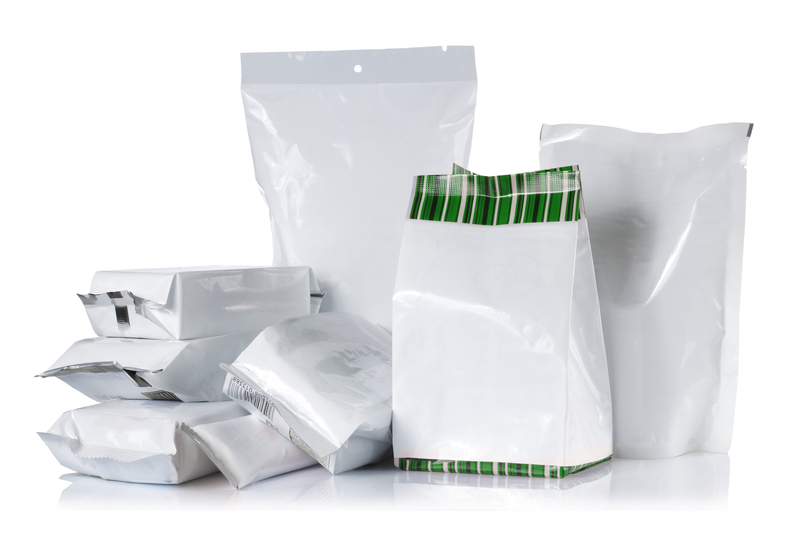Revamp Your Home Recycling with Expert Tips: A Complete Guide
Are you looking to elevate your eco-friendly habits? Home recycling can be easy and highly effective when you have the right guidance. This comprehensive guide will help you revamp your home recycling routine with actionable expert tips, keep you compliant with local regulations, and lead to a more sustainable lifestyle.

Why Rethink Your Home Recycling System?
Recycling at home is more than just tossing items into a bin. Doing it correctly maximizes your impact, reduces landfill waste, and conserves natural resources. However, with evolving recycling rules and common misconceptions, it's easy to make mistakes. Updating your recycling habits can yield greater results while minimizing environmental harm.
Key Benefits of Improved Home Recycling Practices
- Lower household waste sent to landfills
- Support for a circular economy
- Resource conservation (water, energy, raw materials)
- Reduced greenhouse gas emissions
- Potential cost savings (less frequent garbage disposal, possible rebates)
Expert Tips to Transform Your Home Recycling Routine
1. Understand Your Local Recycling Guidelines
Municipality recycling programs vary widely. Start by researching your city or county's accepted items, pick-up schedules, and any sorting requirements. Many communities provide detailed brochures or online lookup tools.
- Check for bin color codes and labeling practices
- Note any material-specific restrictions (e.g., types of plastics, glass colors, shredded paper)
- Regularly review updates from your waste management provider--rules change more often than you think!
2. Know the Basics: What Goes in the Bin--and What Doesn't?
Correct sorting is critical. Here's a quick refresher to ensure what you recycle is truly being recycled:
- Accepted:
- Cardboard and paper: Break down boxes, remove liners and non-paper attachments
- Plastic containers: Rinse containers; check for recycling numbers 1, 2, or 5 (as locally permitted)
- Glass bottles and jars: Remove lids and rinse
- Aluminum and tin cans: Rinse and flatten if possible
- Not Accepted:
- Plastic bags and film (return to grocery store drop-offs where possible)
- Food-soiled items (e.g., greasy pizza boxes, unwashed containers)
- Ceramics, broken glass, and drinking glasses
- Hazardous waste, batteries, electronics (take to special recycling centers)
3. Adopt the "When in Doubt, Leave it Out" Rule
Contaminants in your recycling bin can spoil entire loads. When uncertain about an item's recyclability, it's better not to recycle it curbside. Instead, research specialty recycling locations for unusual items or contact your waste provider for advice.
4. Clean and Prepare Your Recyclables
Rinse containers to remove food and drink residues--leftover material can encourage pests and create contamination. Flatten boxes to save bin space. Removing labels is optional but helpful if possible.
5. Set Up an Efficient Home Recycling Station
- Choose a convenient location: Kitchens, garages, or utility rooms work best
- Use clearly labeled bins: Color coding streamlines separation for the whole family
- Separate as needed: Consider individual bins for paper, plastics, glass, and metals
- Keep a reference guide: Tape a local recycling guide near your station for quick checks
6. Prevent "Wishcycling" with an Education Boost
"Wishcycling" is the act of recycling items you hope are recyclable but are not. This is a common mistake that clogs sorting facilities and reduces overall recycling rates. Stay informed and teach your family what truly goes in each bin to avoid errors.
Advanced Home Recycling Tips from Experts
7. Compost Organic Waste
Not all waste needs to be recycled. Food scraps, yard trimmings, and coffee grounds belong in a compost pile or bin, not your regular trash. Composting produces rich soil for your garden, diverts waste from landfills, and reduces methane emissions.
- Set up a simple kitchen compost pail or collection bag
- Add to an outdoor compost bin or subscribe to a local compost pick-up service
- Avoid composting: meat, dairy, or greasy foods to prevent pests and odors
8. Explore Specialty Recycling Programs
Many everyday items are recyclable but not via curbside bins. Consider these alternatives:
- Batteries and electronics: Check Call2Recycle or local e-waste programs
- Light bulbs: Bring to retailers like Home Depot or special events
- Clothing and textiles: Donate in good condition or seek textile recycling drop-offs for worn-out items
- Pharmaceuticals: Return unused medications to pharmacy take-back programs
9. Avoid Common Recycling Mistakes
Even well-intentioned recyclers can stumble. Watch out for these errors:
- Circular logic: Just because something says "recyclable" doesn't mean your facility accepts it
- Bagged recyclables: Don't place items in plastic bags--they aren't opened at materials recovery facilities and end up trashed
- Dirty recyclables: These contaminate whole loads and can send everything to landfill
- Incorrect plastics: Only numbers designated by your city are accepted
10. Reduce and Reuse First
The best way to reduce household waste is by not creating it in the first place. Follow the classic mantra: Reduce, Reuse, then Recycle.
- Invest in reusable shopping bags, food containers, and water bottles
- Buy in bulk to minimize packaging
- Opt for products with recycled and recyclable packaging
- Repurpose glass jars, tins, and boxes for storage or crafts
Create a Home Recycling Plan - Step by Step
Step 1: Audit Your Waste
- Keep track of what you throw away, recycle, and compost for a week
- Identify items you could divert from the trash with better sorting or by switching to reusable alternatives
Step 2: Design Your Collection System
- Assign bins for each mainstream recyclable material
- Label bins for clarity and educate your housemates or family
- Include containers for special recyclables (electronics, batteries)
Step 3: Educate and Motivate
- Get the whole family involved--use charts and tracking boards
- Host regular "recycling checks" and discuss improvement ideas
- Set a reward system for reducing waste or perfect sorting
Step 4: Monitor Progress and Update Practices
- Review your recycling output monthly
- Adjust your approach if you notice frequent contamination or overflow bins
- Keep up to date with new recycling rules or opportunities in your area
Home Recycling Tools and Resources
Must-Have Equipment for Home Recycling
- Sturdy bins: Clearly marked for paper, plastic, glass, and metal
- Lid labels or posters: Visual aids for quick reference
- Compost pail: Odor-resistant and easily washable
- Segregation trays or bags: For small batteries, electronics, or hazardous waste
Online Tools & Information
Empower Kids and Roommates to Join the Movement
Change starts at home. Involving kids or roommates in your recycling efforts builds good habits and multiplies your environmental impact.
- Use fun stickers and educational games for kids to identify recyclables
- Hang up colorful charts to show progress and set family recycling goals
- Have monthly "eco challenges" with small rewards for great recyclers
- Assign recycling leader roles weekly to keep everyone accountable

Common Questions About Revamping Home Recycling
- Q: Can I recycle pizza boxes?
A: If the box is greasy or has food stuck to it, it should go in the trash or compost. Tear off clean parts to recycle if possible. - Q: Should I crush cans and plastic bottles?
A: Some programs prefer materials crushed to save space, others want them whole for sorting. Check with your local provider. - Q: Can I recycle receipts and thermal paper?
A: Most thermal paper contains chemicals and is not recyclable. Throw it in the trash. - Q: What do recycling numbers on plastics mean?
A: These numbers identify resin types. Your program may only accept certain numbers, so always verify first.
Conclusion: Start Your Home Recycling Makeover Today
Revamping your home recycling is a practical way to protect the planet and inspire those around you. By knowing what's recyclable, setting up an efficient home system, and committing to constant learning, you can maximize your impact. Follow these expert tips, get your household engaged, and take the next step toward a greener future.
Every can, bottle, and cardboard box you recycle brings us closer to a cleaner, healthier Earth. Now's the time to upgrade your home recycling habits!